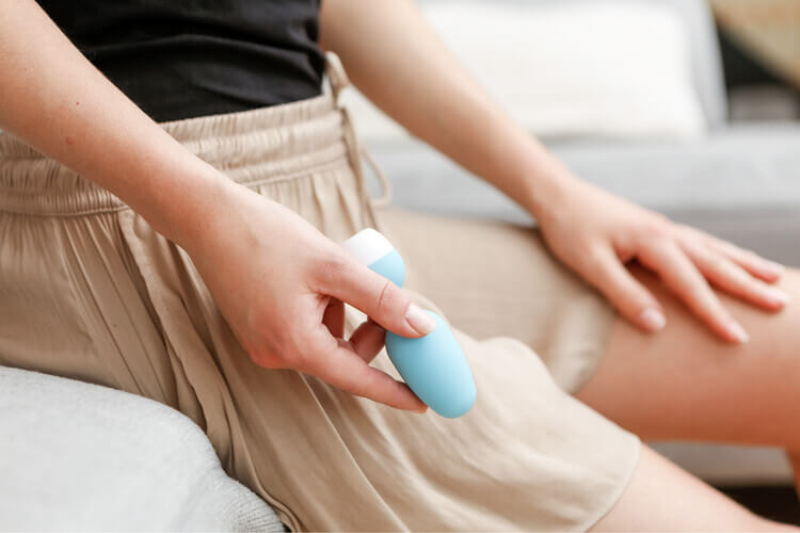
How does the vagina change after childbirth?
Childbirth through vaginal delivery or cesarean section (C- section) has major effects on the vagina and the pelvic floor, as well as your pelvic floor. In this article, discover how your vagina can change after birth and the different stages of childbirth.
Changes in the Vagina After Childbirth
Childbirth is one of the most challenging events the female body can go through. Sometimes, the vagina and the pelvic floor stretch beyond their capacities. As a result, they are often very different after giving birth.
Initially, the tissues are stretched, giving the feeling of a wider and sometimes swollen vulva. This is completely normal: the vaginal and pelvic muscles are very elastic, precisely for childbirth.

You may also feel pain in the vagina after childbirth, accompanied or not by redness and irritations. This is especially the case after a vaginal tear, an episiotomy, or the use of instruments.
Some new mothers also have a sensation of tension or localized tightness. With hormonal changes, it is even possible for the vagina to be drier in the first few weeks postpartum. This can be a problem during a potential sexual intercourse.
Lastly, it can happen that the lips have a different appearance, both in color and shape. Here again, hormones and the stretching from childbirth are responsible.

Will the Vagina Return to Normal After Childbirth?
Yes! Rest assured, the vagina generally returns to its usual size and shape between 2 and 6 weeks after childbirth. This time is needed for the tissues to heal and retract gently.
If the pain experienced is frequent and/or intense, consult your gynecologist or midwife. You can find more information on pelvic pain here.

Free Pelvic floor guide
Find out how to strengthen your pelvic floor to prevent bladder weakness and improve intimate pleasure! 💥
How does a vaginal delivery happen?
Therefore, vaginal delivery is a real challenge for the vagina. But do you know exactly how it happens?
Latent Stage of labor
This initial phase, the longest one, is the preparation for the upcoming labor. The cervix starts to soften and open up and contractions may be irrgeular.
Established Labor
Established labour is where your cervix has dilated to about 4cm and your contractions are stronger and more regular. As labor progresses, the cervix softens (effaces), then dilates and opens. Once open to 10 centimeters, the newborn can pass through the birth canal.

The skin, tissues, and muscles of the pelvic floor stretch to allow its passage. The rupture of the amniotic sac often occurs after the start of labor, just before or after full dilation of the cervix.
Pushing – 2nd stage of labor
The 2nd stage of labour lasts from when your cervix is fully dilated until the birth of your baby. Then, through a series of pushes, the pregnant woman helps her baby descend into the vagina until delivery.
Depending on the progress of the delivery, interventions by the obstetrician may also be necessary to facilitate the process. This includes the use of instruments (vacuum extractor, forceps, spatula) or resorting to an episiotomy (incision at the vaginal entrance). Sometimes, a tear can also occur.
Expulsion of the placenta
Next, we wait a few minutes before cutting the umbilical cord. This is usually the time for “skin-to-skin” contact and the first breastfeeding session.
Finally, the last stage of delivery occurs within the following hour: expulsion of the placenta. New uterine contractions expel this organ that has completed its work.
A vaginal delivery therefore causes extreme stretching of vaginal and perineal muscles and tissues. That’s why they need time to retract and return to their “normal” state.

How to rehabilitate your pelvic floor after childbirth?
Indeed, vaginal birth is a real trauma for the vagina and pelvic floor. However, pregnancy itself weakens the pelvic floor. Therefore, even after a cesarean section, recovery of this area takes time.
You must take care of your perineum and vagina after childbirth, no matter how it occurred.
Adopting good daily habits
This helps to reduce urinary leaks, orga prolapse and other issues specific to women’s physiology after childbirth. First, adopt good practices:
- Avoid lifting heavy loads ( as much as possible)
- Watch your posture
- Gently clean your intimlate regions
- Urinate regularly, dont hold it in for a long time
Doing abdominal-pelvic rehabilitation
Then, undergo proper pelvic floor and abdominal muscle rehabilitation with a specialized physiotherapist or midwife.

After the sessions, they will always advise you to continue doing Kegel exercises at home on a daily basis (contractions and relaxations of the pelvic muscles). This way, your vagina and perineum will maintain good tone.
Continue exercises at home
To maintain a toned pelvic floor there are solutions to help you. The medical device Emy for example, allows you to do your perineal rehabilitation at home.

Equipped with a device connected to an application, you do your rehabilitation by playing games on your phone. Medical protocols are actually hidden behind the mini-games of this patented innovation to promote compliance.
Many healthcare professionals recommend the Emy probe to their patients because it allows for real progress monitoring and especially scheduling reminders not to forget their exercises.

Be patient and indulgent with yourself
Pregnancy and childbirth have put your body through a lot for several months. It is important to take care of it and focus on your postpartum recovery. This includes the rehabilitation of your pelvic floor… and above all, a lot of patience and indulgence towards yourself.


